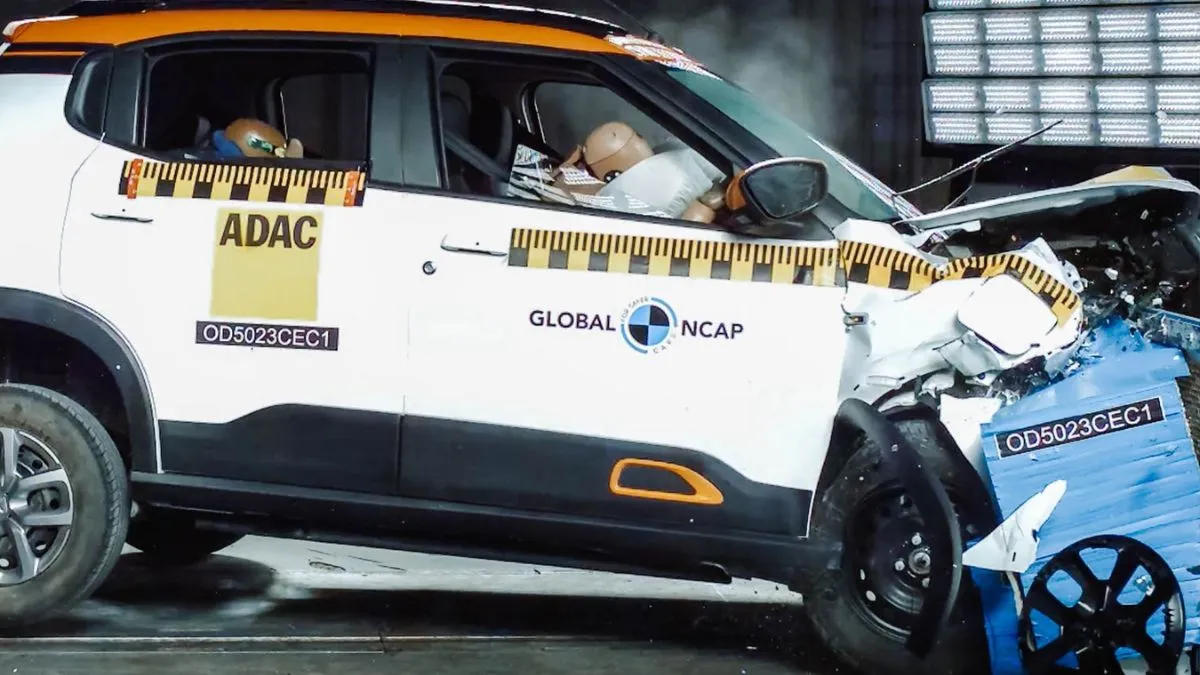- By Divanshi Sharma
- Thu, 21 Mar 2024 06:17 PM (IST)
- Source:JND
As part of the #SaferCarsForIndia initiative, Global NCAP recently tested the Citroen e-C3. The Citroen e-C3 electric vehicle received zero stars in adult occupant protection category and one star in child occupant protection category. Citroen is locally manufacturing the e-C3 electric model in India, sharing its platform with its ICE counterpart.
Due to inadequate protection for the passenger's chest and weak protection for the driver's chest, the Citroen e-C3 received a zero-star rating in adult occupant protection category. Additionally, the vehicle lacks a side head protection system, which is not even offered as an option. Furthermore, Electronic Stability Control is absent in the e-C3.
The Citroen e-C3 secured a one-star rating for child occupant protection due to several shortcomings. These include the absence of three-point seat belts in all positions and the lack of a passenger airbag disconnect switch. Both child dummies' heads impacted with the vehicle interior and only one seating position is suitable for a universal child seat. Although equipped with dual airbags as standard, these deficiencies contributed to the low rating in the child occupant category.
Speaking about this, Alejandro Furas, Global NCAP Secretary General said, “This is an appalling result from Stellantis. PSA was once a leader in safety, but now, as part of the Stellantis group, the manufacturer appears to have taken a major backward step. We hope that this apparent negative trend is corrected globally as a matter of urgency.”
ALSO READ: Hyundai Ioniq 5 XRT Off-Road Variant Spotted Testing; Will It Launch In India?
Addressing this, Stellantis has confirmed plans to enhance safety measures by introducing additional features and incorporating six airbags as standard. Stellantis further stated, “Stellantis confirms its vehicles comply with all current local market regulations and its commitment to safety with six airbags and additional safety features as standard across products in India during the second half of the year.”

